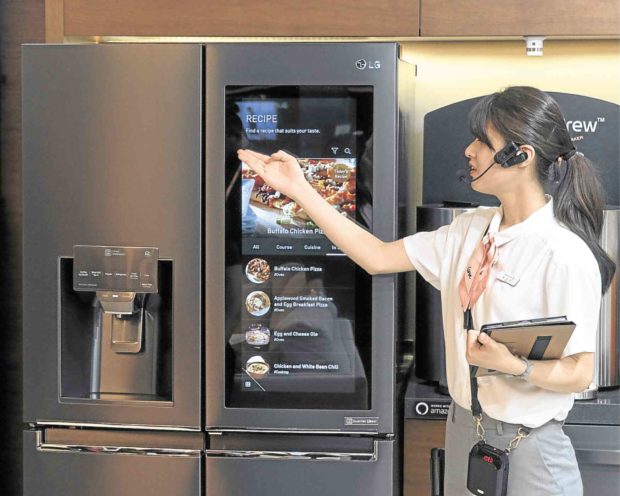
Not far from the South Korean city of Busan lies the industrial city of Changwon. Here, factories are owned by numerous globally recognizable South Korean conglomerates, including LG, where it produces its home appliances.
LG has started pushing for smart technology in Filipino homes, not just in their TVs, but also in their kitchen appliances, washing machines, and air conditioners.
The central figure in this smart integration is the LG Smart ThinQ application, with which users can monitor and control their LG home appliances anywhere with an internet connection through their smartphone.
In the summer months, a common frustration for many is coming home, turning on your air cooler and waiting 10-15 minutes before your home is finally comfortable. But with LG Smart ThinQ app, users can remotely monitor and manage the temperature of their homes through the WiFi-enabled Dual Inverter smart air conditioner. Users can turn on their aircon, even outside the home, in order to come home to a cool environment.
Also, the Dual Inverter Compressor used in these units constantly adjust speed to avoid temperature fluctuations and to lower energy consumption by up to 70 percent.
Seamless kitchen
For users who want the most seamless kitchen experience, LG has integrated smart technology in kitchen appliances, the highlight of which is the stylish and modern Instaview Door-in-door Refrigerator.
This feature allows for easy access to favorite items with minimal to no-cold-air loss. They have also integrated the refrigerators in Smart ThinQ, which allows users to manage temperature and even remotely diagnose problems with their refrigerators with their smartphones.
We got a sneak peak into their next generation Instaview Door-in-door Refrigerators, which replaces the Instaview panel with a see-through LCD touchscreen where one can view recipes and control other appliances.
A built-in camera inside the refrigerator will take a picture every time the door closes and provide that picture on the Smart ThinQ app, convenient when a trip to the grocery is needed.
Artificial intelligence
It’s not just connectivity and integration that LG is introducing in its appliances, but also artificial intelligence (AI), through the latest front-loading washing machine that can reduce damage to fabrics by 18 percent.
This is done by using LG’s new AI Direct Drive which weighs the amount of laundry, detects water penetration of the fabric, and assesses the fabric softness in order to fine-tune the machine’s performance. This is in addition to the improved TurboWash 360 which gives the front loader the convenience of a fast wash in just 39 minutes. It’s also controllable via Smart ThinQ.
These new features do not come without challenges in the Philippine market, though. For many Filipinos, smart technology comes with the assumption of easy breakage of electrical components.
While LG provides a 10-year warranty on all of its featured products, the warranty only covers compressors, inverters, or motor drive, and not the electrical components.
According to Sung Han-jung, a team leader from LG Electronics, Filipinos look for durability. By providing a 10-year warranty when the industry standard is five years, LG is showing that they have confidence in their products.
Another obstacle to smart technology in Philippine homes is that virtual-assistance applications like Smart ThinQ are not yet popular. Smart ThinQ is designed to work seamlessly with Amazon’s Alexa, LG’s Cloi, and Google Assistant, but the first two have yet to be released in the Philippines.
Finally, the products that feature all these smart features come with a premium price tag. However, Sung assured that while the smart features are limited to the premium line, the innovative technology that drives the appliances’ basic function, while lowering energy consumption and maximizing efficiency, have and will continue to trickle down to more basic models. —CONTRIBUTED